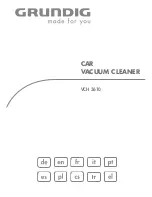
Device filling/emptying
© Elma Schmidbauer GmbH
BA_Elmasteam_8_Vers.07.2016
47
6.1
Requirements for the Water Quality
INFORMATION
Requirements for the Water Quality
•
Only fill the unit with potable water or DI water.
•
If the water conductivity is < 2μS/cm then, at
commissioning (once!),
the pressure vessel must be filled with 1 levelled-
off teaspoon of table salt: For this purpose, firstly
dissolve the salt in a glass of water and fill into the
filling hole.
•
The salt does not go over into the vapour phase
and thereby remains in the device. Therefore, the
addition is only necessary during commissioning or
after descaling, (Chapter 8.2).
INFORMATION
Water Quality
•
Preferably operate the device with DI water. The
service life of the device can therefore be
considerably extended.
•
Water quality can considerably influence the
maintenance intervals and the cleaning results.
6.1.1
Determining the Water Quality
The quality of the water which is utilised will have a decisive influence on
the service life and product safety of the device. The harder the water is,
then the more often the machine must be descaled. Therefore, it is
important to adjust the water hardness.
Measure before commissioning to determine the local water quality with
the accompanying test strips Utilise the "Settings" Table (Figure 7.4.6.1)
to set the programme number for the lime and chlorine content! Settings
(Chapter 7.4.6).
INFORMATION
Measuring the Water Quality
•
Utilise the "Settings" Table (Figure 7.4.6.1) to set
the programme number for the DI water or
softened water! Settings (Chapter 7.4.6).
•
When using DI water or softened water, the de-
calcification levels 1 + 2 must be executed.
















































